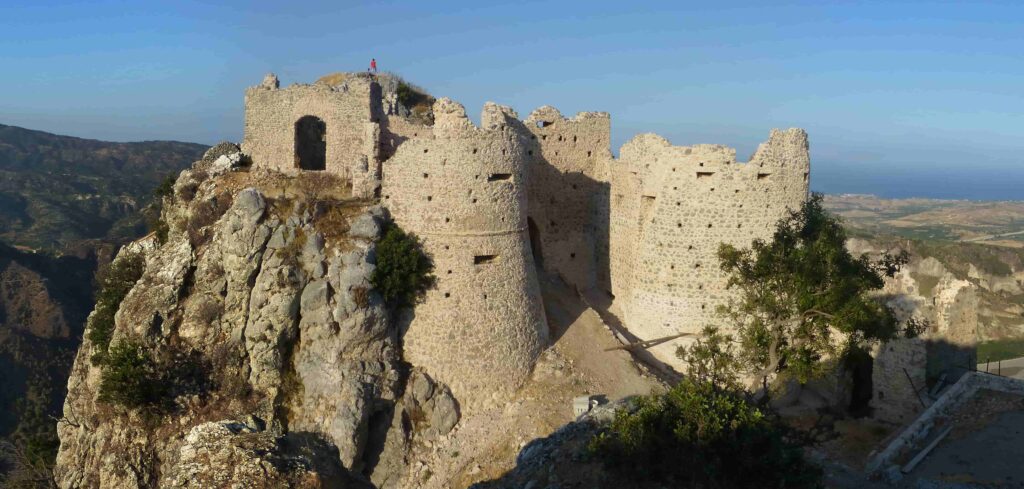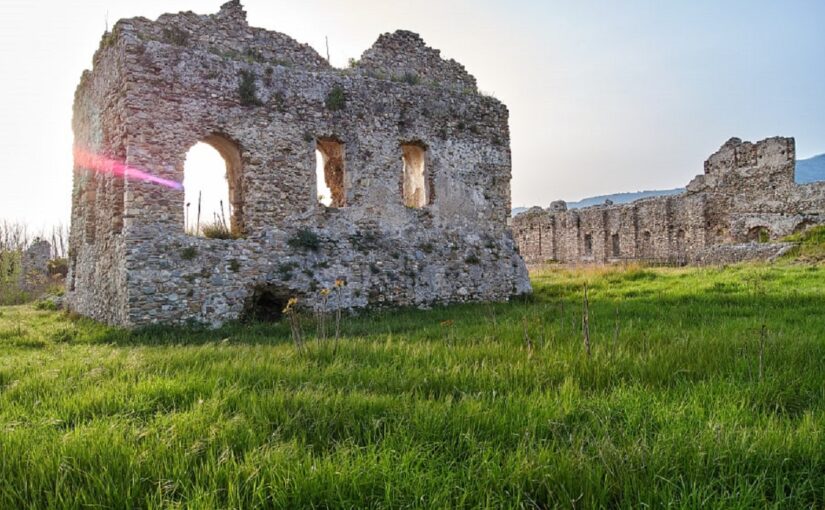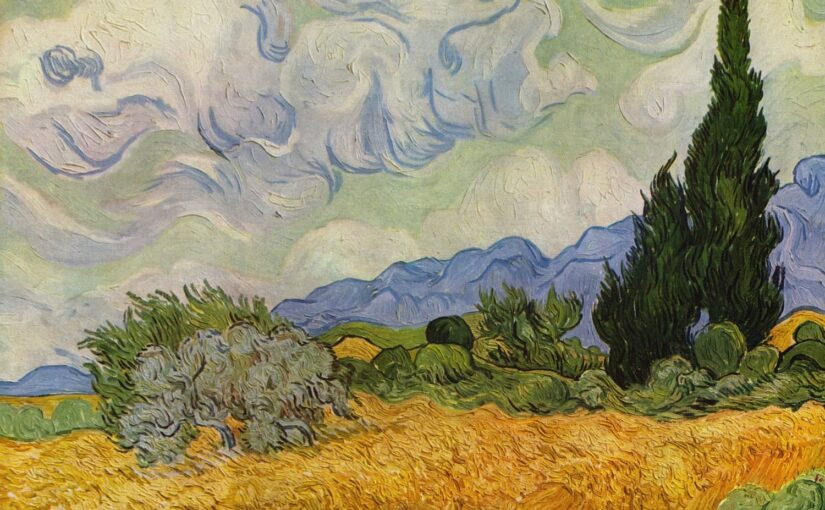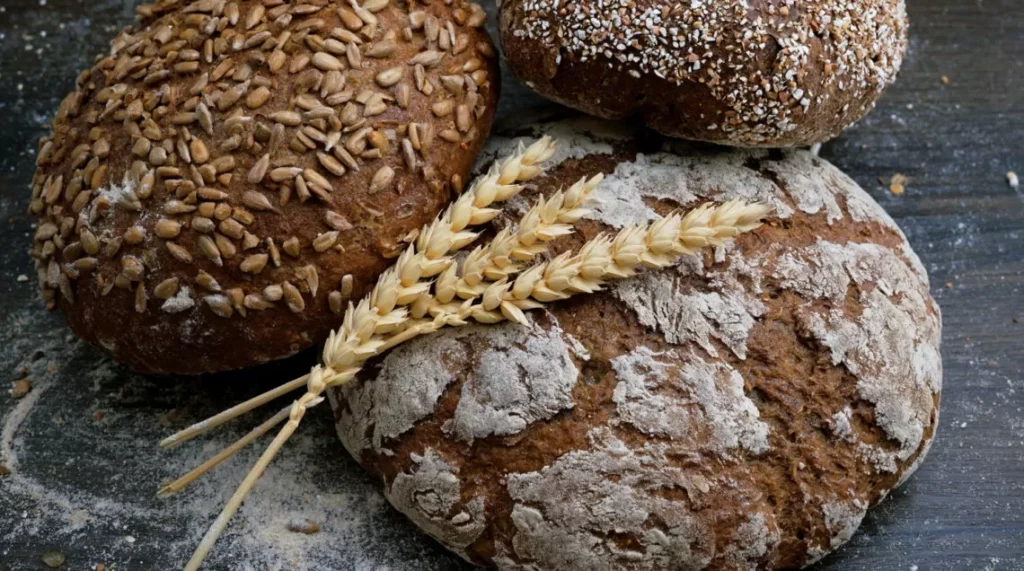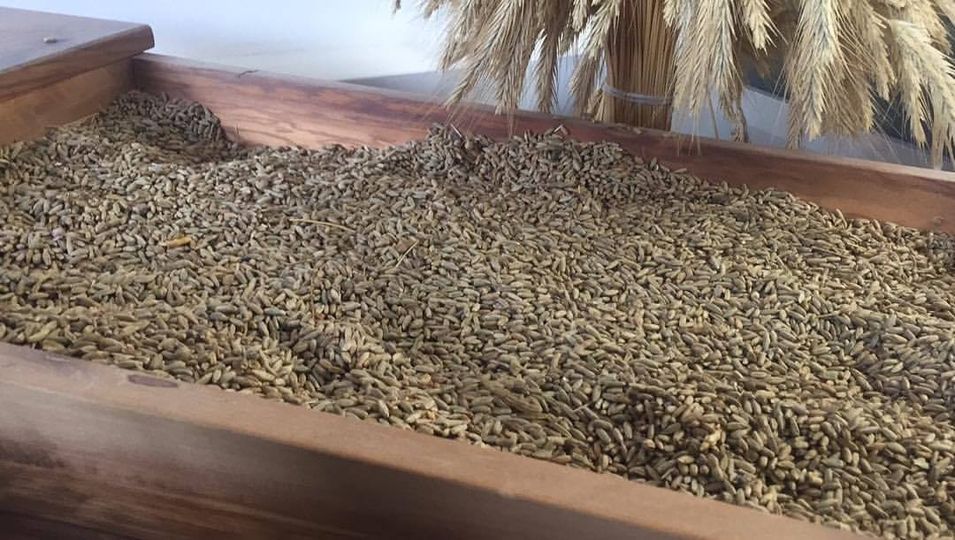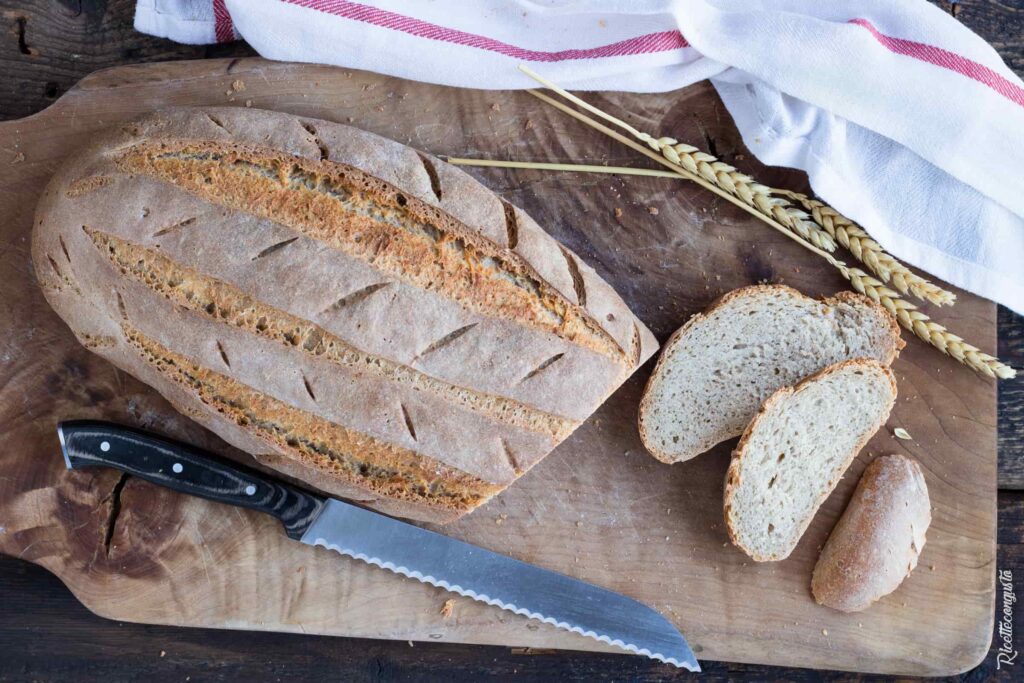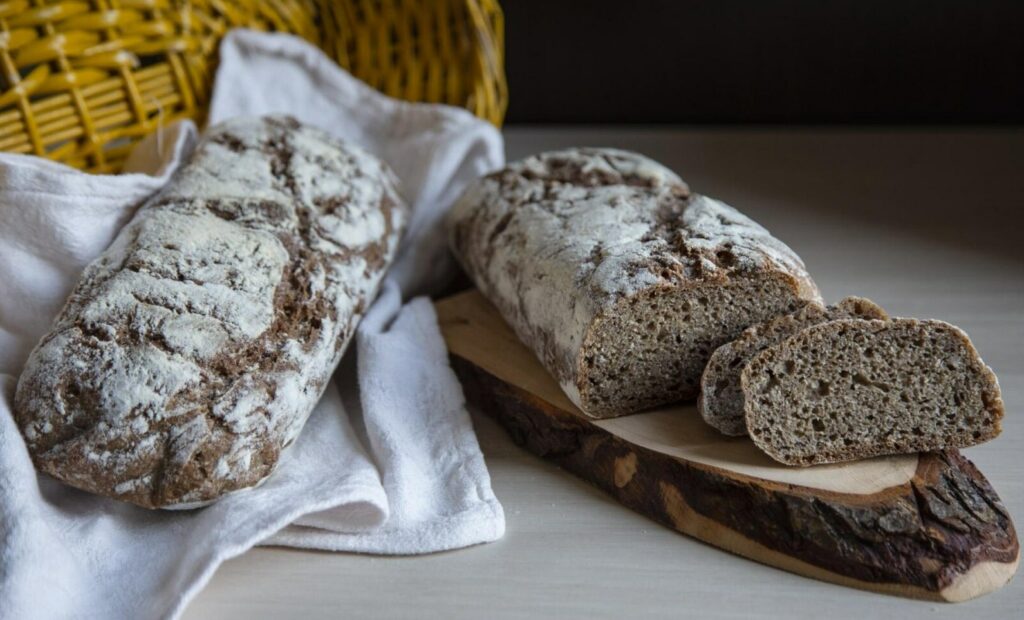8.1.2023
The Sila Greca represents the northern part of the Calabrian plateau of the Sila.
Inside, in a picturesque valley crossed by the Trionto, stands Longobucco, a small town in the province of Cosenza which keeps alive the memory of its Norman foundation. The village is located between the peaks and woods of the Sila National Park.
Longobucco has known ups and downs: in the 1950s the craft activities of working with fabrics, metals, wood and jewelery thrived here. Prosperity then declined and in the 1970s the main part of its inhabitants and businesses partly disappeared. A trace of the Norman food and wine past still remains in a local meat-based delicacy, which will be discussed below.
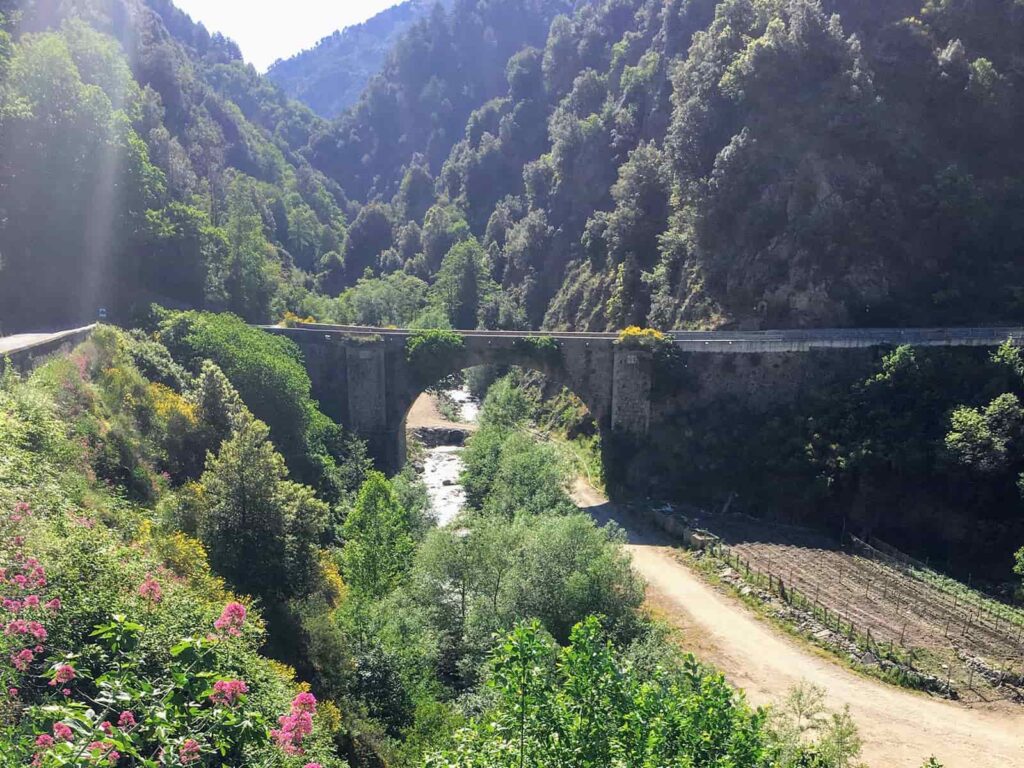
A DELICIOUS LONGOBUCCO DISH: THE SACCHETTO (LITTLE BAG)
The sacchetto (little bag) of Longobucco is a tasty pig’s trotter. Longobucco, a typical Norman village, is known for this delicious roulade made from the meat of the front leg of the pig. The pork is minced and stuffed into its own rind.
The name sacchetto (a little bag), in fact, derives from the shape of the rind, which stitches a package of black pig from Calabria, a rustic, lean meat that comes from a skilful grazing of black piglets in suitable pastures.
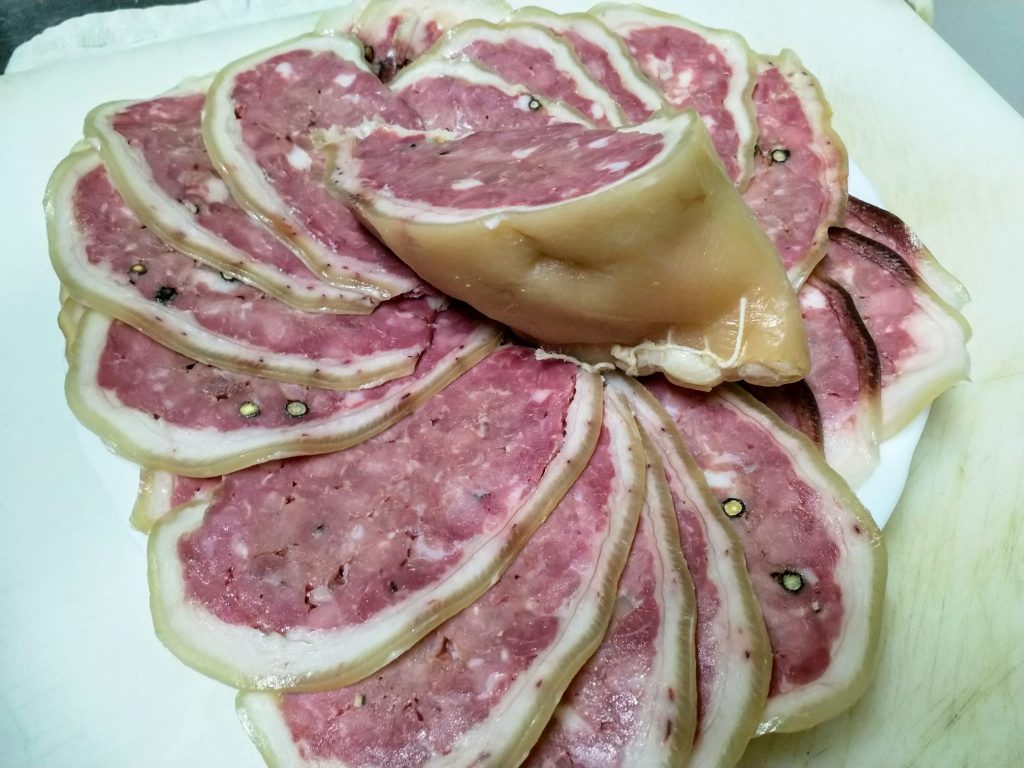
The black pig was, until the 1920s, extremely widespread in various areas of Calabria, then a slow decline in local zootechnics, increasingly linked to the choice of more productive breeds, brought the Longobucco black pig almost to extinction. In 2007 alone there were less than 500 specimens and today various projects have been implemented to try to protect this pig.
From a gastronomic point of view, the sacchetto of Longobucco is traditionally eaten in slices, accompanied by the typical side dishes of the Greek Sila, such as mushrooms in oil, steamed vegetables or legumes. The cured meat has a compact body, has more or less lively colors and is delicately scented with spices, aromatic herbs and other smells.
To prepare the little bag of pig’s trotter, the front leg of the pig is used, in the part between the foot and the thigh, and all the muscle is extracted, leaving the rind intact. The meat is cut into small pieces, sprinkled with salt and black peppercorns, put back in the outer crust and sewn with kitchen twine.

SMAF LTD
Explore our products, coming from CALABRIA. Order the food and beverage products that allow you to explore the Mediterranean diet of a remarkable region. Surrounded by two seas and adorned with pine forests, mysterious villages, natural habitats, and rich biodiversity. Discover handcrafted delicacies that embody the soul of the land: sun-ripened fruits, premium olive oils, bold wines, artisanal cheeses, and traditional cured meats, all crafted with passion and authenticity.
Due to the leathery consistency of the rind, a cobbler’s awl is actually used to sew the bag. The bag is then cooked in the same pot used to cook pork frittole (local name given to the so-called pork cracklings). After about three hours of cooking, the cured meat is drained and placed while still hot in an earthenware pan, into which the fat obtained from cooking the frittole is poured; thus prepared, the sack can rest for a month in a dry and cool environment.
The sacchetto of Longobucco is an artisanal preparation and the product is not currently for sale, because it is made in the family or in selected restaurants.
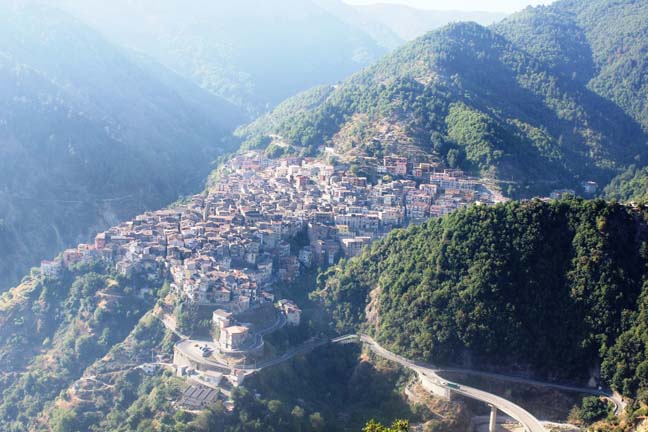
MACROHISTORY OF THE NORMANS IN CALABRIA
Even with lights and shadows, the Normans brought Catholicism to Calabria as early as the 11th century, wresting this land from both the Muslim Arabs and the orthodox Byzantines. The not entirely positive judgment is linked to the fact that the Normans were fierce warriors, with a past of mercenaries and marauders and to the fact that, while bringing aid to the Roman pontiff throughout Southern Italy, in the 11th century, sacked Rome (destroying some important churches of Latin Christianity).
The first architects of the Norman conquest in Calabria were the two brothers Robert of Hauteville, called the Guiscard, and Roger of Hauteville, followed by Roger II of Sicily. The first two leaders were particularly attached to the French Benedictine monks and, therefore, brought several abbots and monks from Normandy (northern Atlantic part of present-day France), as well as playing an authentic religious role themselves in the conversion of the subject peoples.
From that moment on, the Normans were also able to have a profound impact on the social and economic level, thanks to their fiefdom of Calabria and Sicily which saw the rise of all the arts in these lands. Under the Norman dominators, among other things, the recovery of the now lost Greek-Latin world began, through the substantial cultural legacies of Greek texts (of art, science and philosophy) that the Normans received from the Byzantines and the Arabs (still present in a substantial number in the invaded lands).
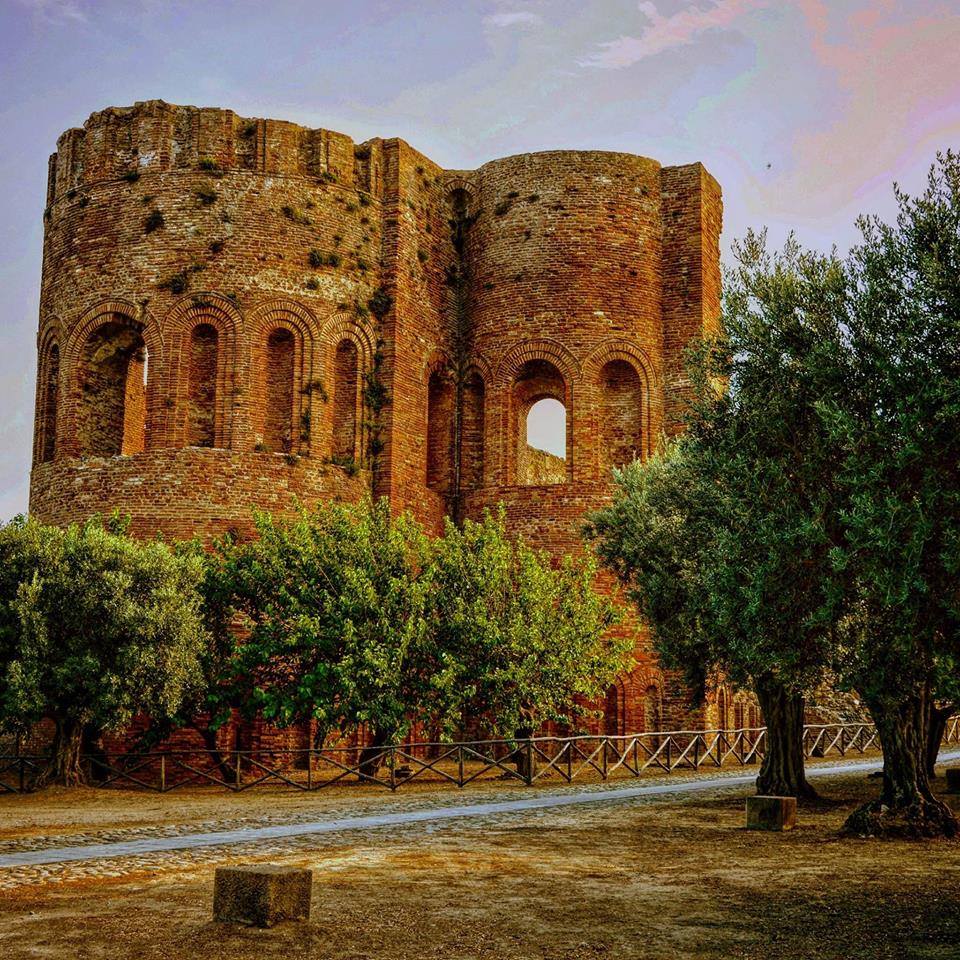
THE STEPS OF CONQUEST
Robert of Hauteville, named the Guiscard, arrived in Calabria approximately in 1047 initially living in the Scribla area, in the current territory of Spezzano Albanese; subsequently, he managed to occupy the city of San Marco.
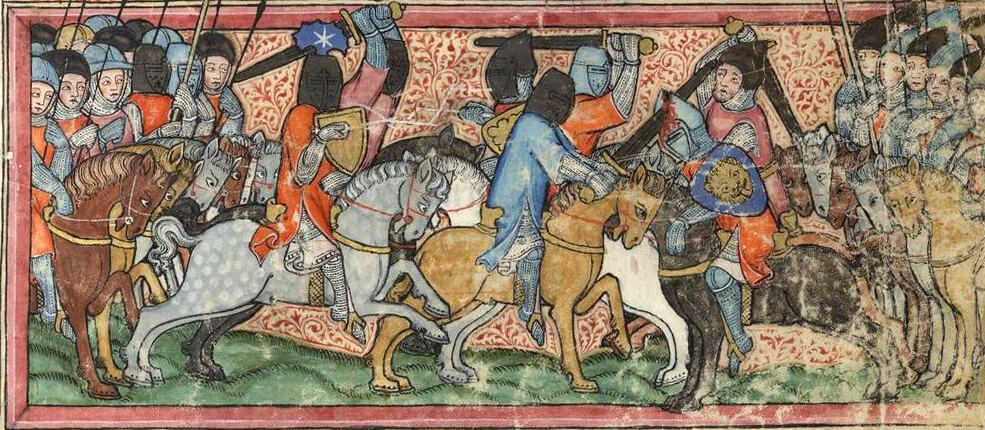
In 1048, after having repressed a revolt in the Valley of Crati which had broken out against the Lombard prince Guaimario IV, Robert the Guiscard conquered and placed under his control the centers of Bisignano, Cosenza, Martirano, Montalto, Rossano and the Plateau di Sant’Eufemia. A few years later his younger brother Roger joined him; and together they carried out, since 1056, a systematic plan of conquest of Calabria, coordinating everything right from the city of San Marco.
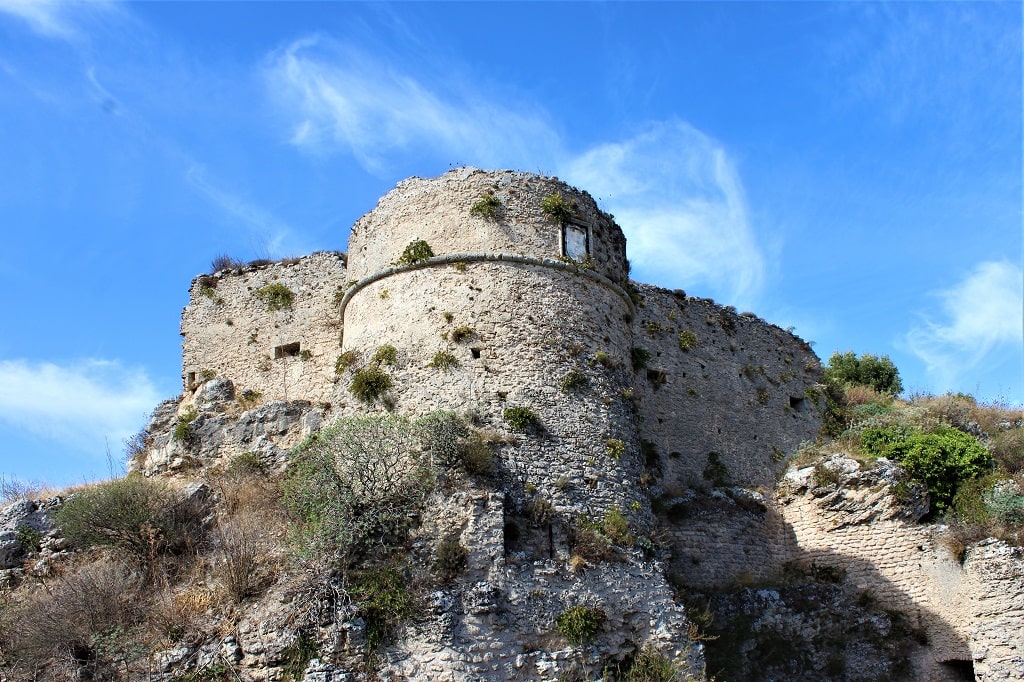
In 1057, upon the death of the Norman duke Umfredo, Roberto took possession of his Apulian territories, also increasing his prestige within the Norman cavalry. In the same year, the Altavilla brothers besieged various Lombard and Byzantine castles in the current Cosenza area, conquering them all, one by one; subsequently they conquered Catanzaro and put the surroundings of the current Reggio area to fire and sword, but without being able to conquer Reggio. The Normans conquered Reggio only in 1059, where Roberto was acclaimed duke by his army.
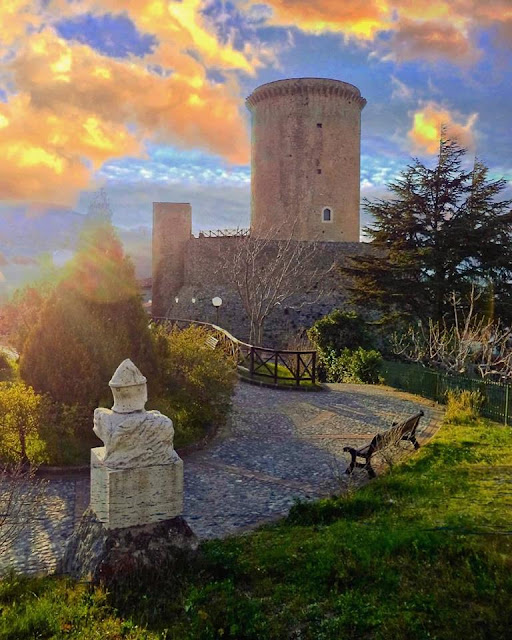
Subsequently, it was the turn of the conquest of Squillace, the last Byzantine enclave to fall into Norman hands. With the fall of Squillace, Robert Guiscard was officially proclaimed Duke of Calabria, Puglia and Sicily by Pope Leo IX in Melfi.
Finally, the Altavilla brothers divided up the territories of Calabria in the castle of Scalea, where they signed the famous “Pact of Scalea“. The northern part of the region, up to Mount Intefoli near Squillace, fell to Roberto, the southern part to Roger. In 1085, upon Robert’s death, Roger obtained total control over southern Calabria, by concession of his nephew Bohemond, after this had been helped by Roger himself in the succession struggle against his brother Roger Borsa. The region remained under the Norman descendants until the advent of the Swabians, who inherited the territories with Federico II, son of Costance of Hauteville.
The Normans left the administrative management of the Calabrian settlements to the local populations, in exchange for hostages and submission. And to control the territory, they erected various strongholds and castles throughout the region, often adapting pre-existing Byzantine fortresses. This happened in Aiello, Catanzaro, Cosenza, Crotone, Gerace, Maida, Martirano, Miletus, Nicastro, Reggio, San Marco, Santa Severina, Scalea, Scilla and Stilo. In particular, due to its central position in the region, Miletus was chosen by Roger as the capital of the Norman state in Calabria, as well as as a center of spiritual irradiation of religious conversion, implemented through the Benedictines. Roger II, the Norman king of Sicily, was also born in Miletus (December 22, 1095).
From Miletus and Calabria the Normans then continued their legendary liberation of Sicily from the Arabs. In fact, in 1064, starting from here, with the help of local contingents, Roger undertook the conquest of the island.
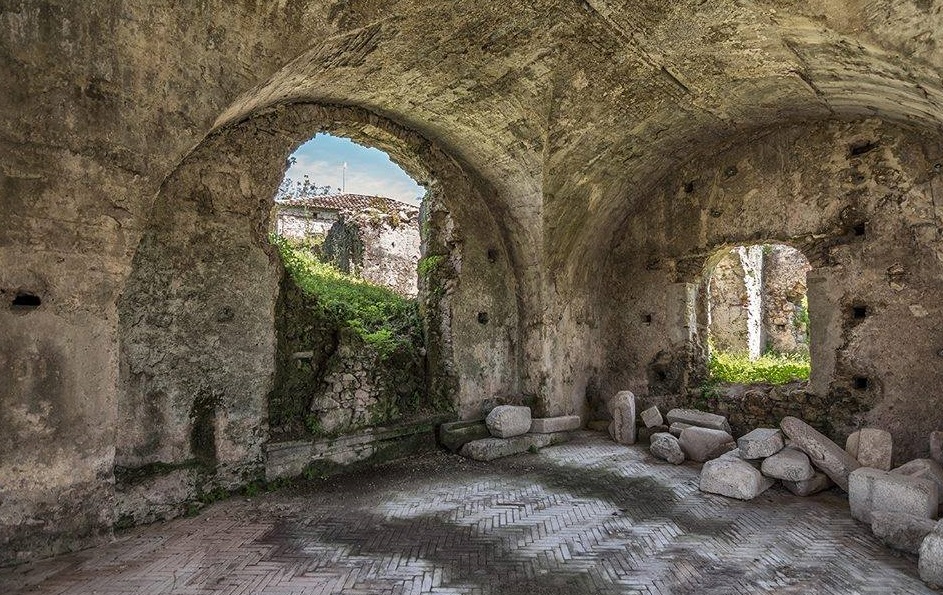
REBIRTH OF BENEDICTINE CHURCHES IN THE NORMAN PERIOD
The abbey of Sant’Eufemia Vetere was commissioned by Robert the Guiscard in 1062 as a mausoleum for the souls of his loved ones, while the Trinità di Miletus was commissioned (between 1063 and 1066) by his brother Roger of Hauteville, later Count of Calabria and Sicily, as a tomb for himself and for his wife Eremburga (the latter’s sarcophagus is now on display in the Miletus museum).
The abbey of Sant’Eufemia was built by a Norman monk, Robert de Grandmesnil. In fact, it is believed that it was the Benedictine religious themselves who designed the churches in which they were appointed abbots or bishops. It was a rule in the Benedictine order that architecture should also be studied among the various branches of the art and the abbots had the obligation to trace the plan of the churches and secondary buildings that they were called to direct.
Robert de Grandsmenil, who arrived in Calabria from Normandy in 1062 with 11 monks, was the first abbot of Sant’Eufemia and under his control were the abbeys of Venosa and Miletus, governed by two French priors. It seems that Abbot Grandsmenil was forced to flee from Normandy to Calabria due to his political intrigues against Duke William; called “the conqueror” after the 1066 Battle of Hastings, in which he subdued England.
